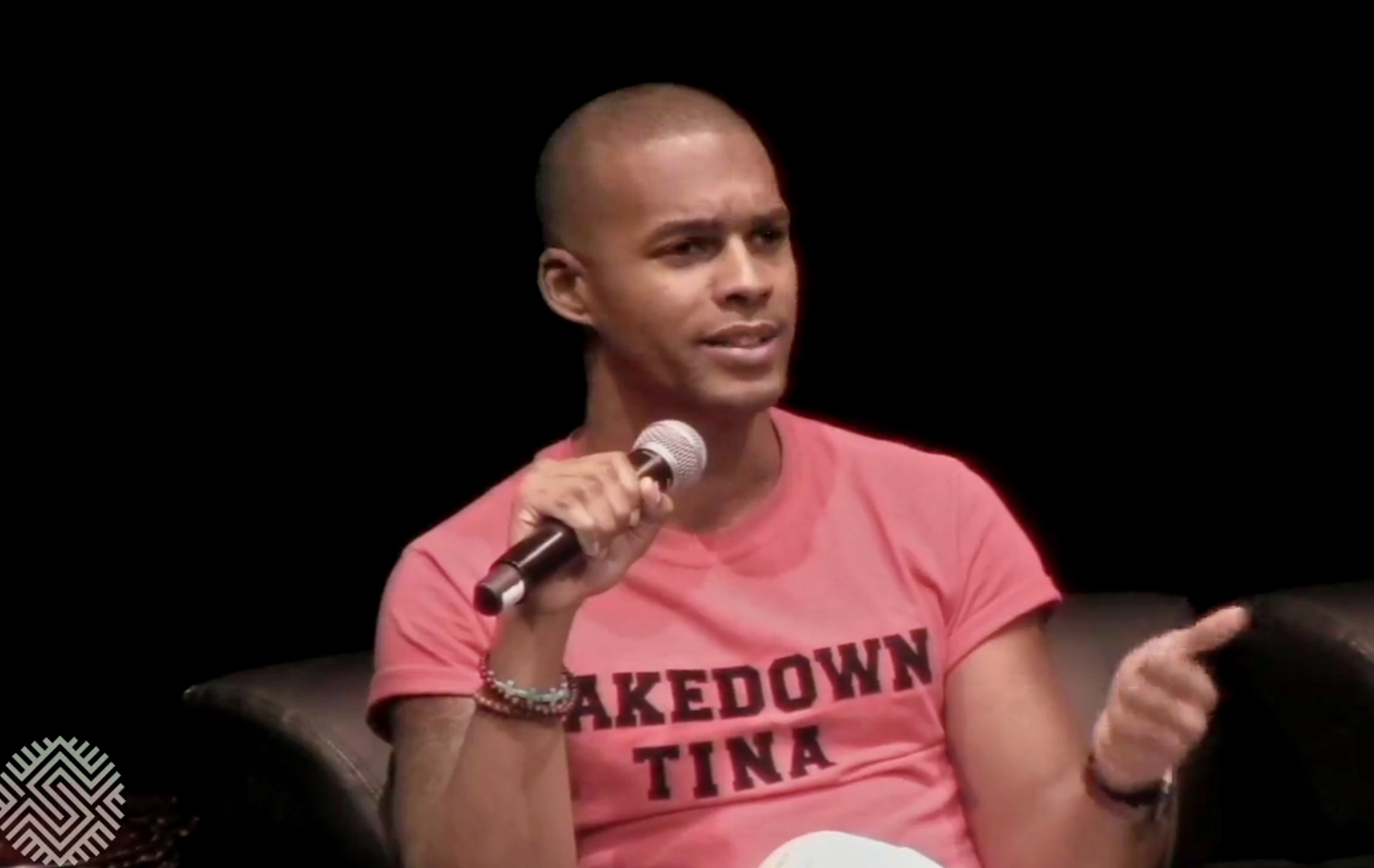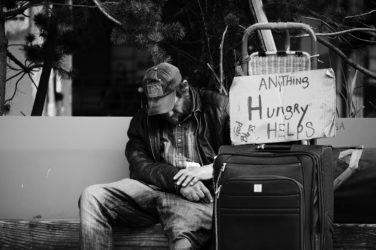“As a society as a whole, we need to start talking about sober fun,” Jacen Zhu, a gay porn star and crystal meth activist (above), told an audience at “ParTy boi, Meth & Health.” The conference (sponsored by ACT UP and other organizations), convened in New York City November 29 to discuss crystal meth—known as “Tina”— in the Black and Latino gay community.
“I went to an event for Gay & Sober. We went on a cruise for Gay Pride,” Zhu recalled. “I was surprised at how much fun I was able to have without having a drink, without having a drug … We need to really start integrating that into our communities. It’s cute to go to a bar here and there, but you know, these are people who are trying to save their lives.”
Plugging his #TakedownTina campaign on a panel of current and former meth users, Zhu elaborated on his aim to create more “experiences to uplift [people who have quit drugs] and keep them going on their sobriety so that it doesn’t seem boring and it doesn’t seem stale.” In other words, Zhu hopes to “change our society to believe in sober fun.”
His mission to reduce meth addiction by creating more sober spaces and experiences for the queer community of color raises questions for the harm reduction movement, which is often skeptical of abstinence-only programs.
Harm reduction urges that all drugs have the potential to be used with greatly minimized risk, yet many of those most affected by problematic drug relationships, drug war and health disparities may say otherwise.
“To Black people, drug use is not related to anything positive,” writes Nia Jones in a literature review on Black leadership in harm reduction for the Harm Reduction Coalition. “Poverty, drug use, and despair often go hand in hand, and people of African descent have suffered disproportionately from these harms.” She further identifies “adverse effects of drug use in communities of color” as “unemployment, substandard housing, homelessness, family dislocation, police brutality, incarceration, and recidivism.”
Jones notes that drug use can be “a means of surviving systems of oppression.” Her words about drugs’ negative connotations in the community may also allude to a Black political elite that objects to drugs.
“I like to call them the Black Victorians, who had always taken a very bourgeois position around the need for Black people to adhere as much as possible to middle-class standards of behavior as one of the prerequisites for being able to be fully integrated into American society,” said Deborah Small, a pioneering drug policy reformer.
Many Black people clearly do not have negative views of drugs, as evidenced by groups like NY-VOCAL and widespread Black involvement and leadership in harm reduction. But Jones speaks to the way violence attributed to drug use and sales has devastated the Black community, which in turn shapes many perspectives inside it.
This may be hard to grasp for white harm reductionists whose libertarian attitudes to drug use happen to tally with leftist harm reduction politics. Most harm reductionists have knee-jerk reactions to portrayals of drugs as inherently bad, with sobriety touted as the only healthy path forward—and there are valid reasons for this, although abstinence is also part of the harm reduction spectrum.
But harm reductionists who sincerely embrace social justice within the movement should engage with leaders of communities of color who seek to fight back against addiction and state-fostered violence, but remain skeptical of white-led harm reduction.
It’s true that awkward realities result from this tension. The Detroit chapter of the NAACP, for example, was a vocal opponent of the recent campaign to legalize cannabis in Michigan.
“Prop. 1 supports the very issues that are harming our neighborhoods and killing our families,” said Kamilia Landrum, deputy director of the Detroit branch of the NAACP, at a press conference. “This ballot initiative adds another layer to the systematic racism that has held our communities of color—particularly African Americans—in bondage for hundreds of years.”
Detroit NAACP does support decriminalization of weed—a marked departure from some other Black advocacy groups that endorse harsh punitive measures for people who sell drugs. But Detroit NAACP is specifically opposed to legalization because of a concern about “rich white guys [selling] pot gummy bears in your community.” Fear of the commercialization of marijuana and the accompanying extractive capitalist business model makes sense, even within a harm reduction framework.
Such viewpoints have history. The Young Lords, a Puerto Rican liberation organization, noted the exploitative relationship between white profits and harm to communities of color during the 1970s heroin epidemic in the predominantly Puerto Rican and Black South Bronx. Although they were committed to harm reduction—founding a heroin detoxification clinic in a neighborhood lacking such resources—they were clear about their political disdain for heroin as a substance: “the true nature of our [Black and Puerto Rican people’s] oppression” was a “connection between capitalism, dope and genocide.”
These politicized leanings towards sobriety stem from a critique of the racist functions of drugs, and from a desire to unify communities of color lacerated by criminalization and inaccessible healthcare.
“I just want to tell people that the drug does not love you,” Zhu told TheBody.com in an interview earlier this year. “We do. And we really care about you. And we really just want you to come home. Because . . . it’s just not worth it. It’s really not.”
Hypothetically, if Black and brown people were not oppressed, drug use would probably not disproportionately harm their communities. But Black and brown people are on the one hand disproportionately criminalized, incarcerated and killed by police for drug use and sales, and on the other excluded from life-saving services.
Harm reductionists believe that drugs themselves can be divorced from the racist violence that drug policies wreak. But for communities of color, how and when that can be accomplished in practice is often unclear. The harm reduction discourse needs to remember that for some people of color, a “drug-free world”—unlikely as that is—is easier to imagine than a racism-free world, in a country that was built on racism.
The work, then, is for the harm reduction community to build bridges with abstinence-only communities of color in the fight against white supremacy—mindful of the disparate real-world implications of drugs for white people and people of color.
Video Still: ACT UP New York




